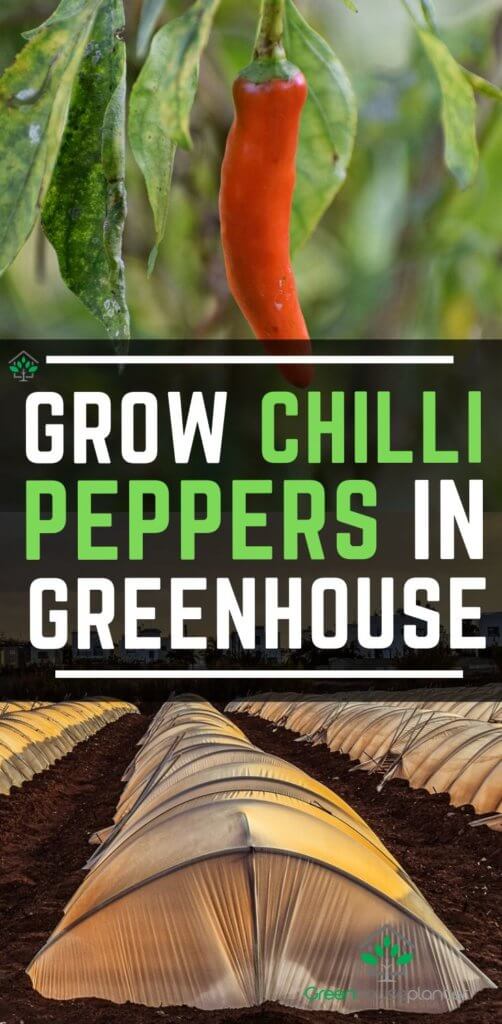![]()
Plant Dreams, Grow Gardens
Do you know how to grow chili Pepper in your greenhouse?
Here is the best opportunity for spicy food lovers to grow their own chili peppers in their greenhouse at home. Chili Peppers are very easy to grow inside a greenhouse. They come in different varieties and its selection depends on which variety you want to grow in your greenhouse based on your preferred flavor, color, and hotness.
Unlock the potential of your garden with GreenhousePlanter – explore our PRODUCTS today!

Here is a complete guide on how to grow your own brightly colored and sizzling hot chillies in your greenhouse.
Let’s get started.
You should first select which chilli pepper variety you wanna grow. The Following Table provides a list of the well know chili pepper varieties that you can grow in your greenhouse.
| Sr NO. | Chili Varieties | Properties | Product Links |
| 1 | BIG JIM LEGACY | Mild Hot, Large 8″ Chili Size, Fleshy Peppers, Plant grow 30″ tall, Plant in Raised beds or large 5 Gallons Container | See Pic & Price |
| 2 | POBLANO – HEIRLOOM | Mild Hot, 4″ long and 2-1/2″ wide Chilis, Heart Like Shape, 30″ tall Plants, Plant in Raised beds or large 5 Gallons Container | See Pic & Price |
| 3 | Jedi Hybrid-F1 Jalapeno | Very Hot, 4″ long Chilies, Bit Smooth Dark Green Fruit, 24″ of Avg Plant height, Plant in Raised beds or large 5 Gallons Container | See Pic & Price |
| 4 | PAPRIKA | Mild Hot, 6″ long Chilies, Usually dried and powered, Bright Red when Ripens, Plant in Raised beds or large 5 Gallons Container | See Pic & Price |
| 5 | Hatch Green Mild | Mild Hot, 6″ long Chilies, Fleshy Peppers, Plant grow 30″ tall, Plant in Raised beds or large 5 Gallons Container. | See Pic & Price |
| 6 | Chile De Arbol | Very Hot, 3″ long Chili, Dark red with woody stem when mature, Plant can grow up to 3-4 feet high, Plant in Raised beds or large 5 Gallons Container. | See Pic & Price |
| 7 | Chimayo Heirloom | Medium Hot, 6″ -7″ long Chili, Dark Red, Thin Skin, Usually dried, Plant in Raised beds or large 5 Gallons Container. | See Pic & Price |
There are a lot of other different varieties that you can choose, Always buy from a good seeds supplier because they will provide you legit seeds with accurate information.
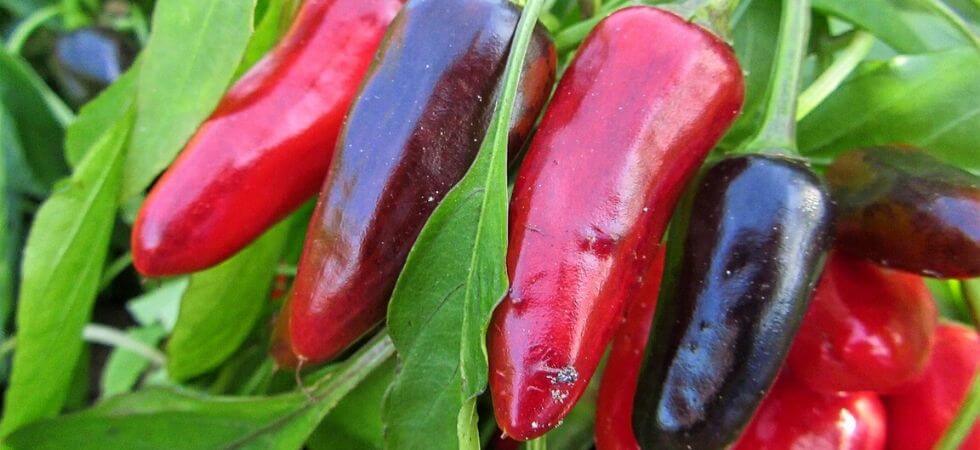
Chilli Peppers are warmth-loving plants and they can tolerate night temperature of 12ºC (54ºF). Chilies require a minimum greenhouse temperature of at least 15ºC (59ºF).
What if you have unheated Greenhouse?
If you have an unheated greenhouse then I will recommend transplanting your chilies seedling 1-2 weeks after the last expected frost dates.
You should note that chilies seedlings will require around 45 days to become ready for transplantation after you have sown the seeds in the seedling trays. Therefore, you should sow the seeds indoors in a seedling tray, 45 days before the expected transplantation date. Don’t sow seeds it inside your unheated greenhouse because the temperature will be too low for your chili seedling to grow.
The best months to sow chili pepper seeds are, January, February, or even March (For most of the regions). Sowing them early will give the chilies the time to mature before the end of the summer season. However, you should make sure that your Greenhouse chilies are getting at least 6 hours of sunlight daily. The amount of hotness in chili peppers is also determined by how much time it was given to fully ripe.
If you are interested in learning about the economical ways for heating your greenhouse see the below articles.
What if you have heated Greenhouse?
Well! if you have installed a proper heating system inside your greenhouse then you should not wait for the last expected frost dates. You should start as early as you can. But the available sunlight is a limiting factor in this case. You should make sure that when you transplant your greenhouse chili peppers inside a greenhouse they are getting at least 6 hours of sunlight during the day. If your area gets less than 6 hours of sunlight during the late winter, I will strongly recommend using grow lights to provide your greenhouse chili peppers with additional sunlight.
For grow-lights, I will recommend installing BESTVA LED Grow Light (See Price), 24 inches above your greenhouse chili peppers.
Remember the hottest chilli varieties needs the longest growing period.
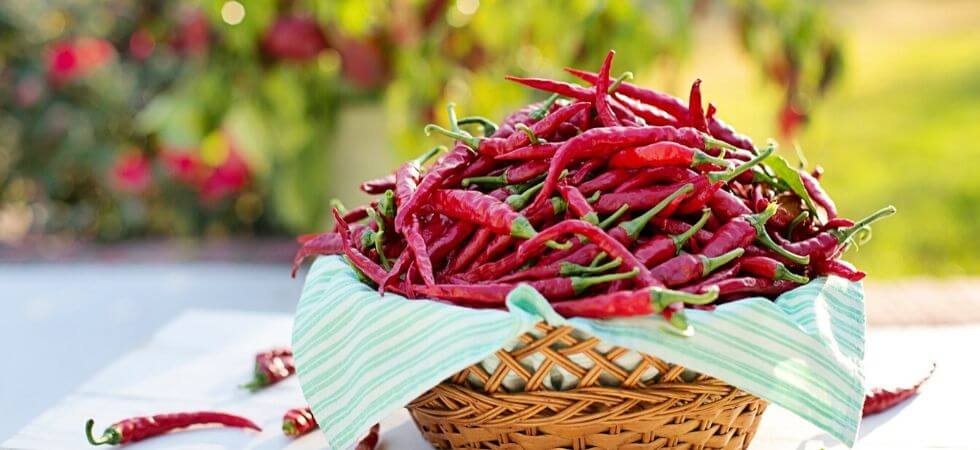
Here is how to grow your own chillies from seed:
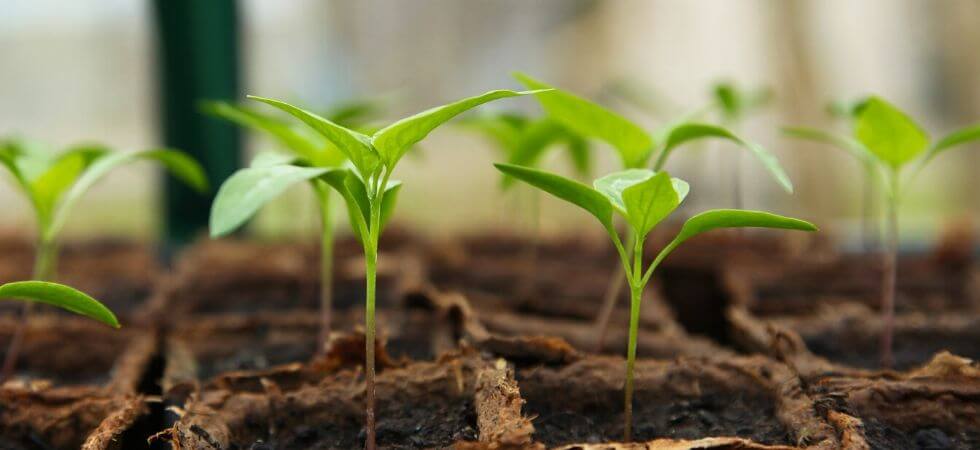
The main reason why seeds are sown indoors is to make sure that they grow as healthy seedlings.
The seedlings should then be transplanted into your unheated greenhouse 1-2 weeks after the last expected frost dates, according to your geographical zone.
When is the time to propagate transplants or hardening off? When seedlings reach a certain height of few inches where you can handle them without damaging the plant. Know that it is the right time to propagate into larger pots.
The cells of the seed trays that I have recommended are 2 inches in height. Once the roots of seedlings fill the cells (at a height of about 2-3 inches) transplant them into 3-4 inch pots filled with compost. Keep it warm on the heat mat under the grow lights. Allow them to grow in pots until favorable conditions reach that is without frost.
Once, Your greenhouse chili pepper plants are around 45 days old they will be ready for transplanting.
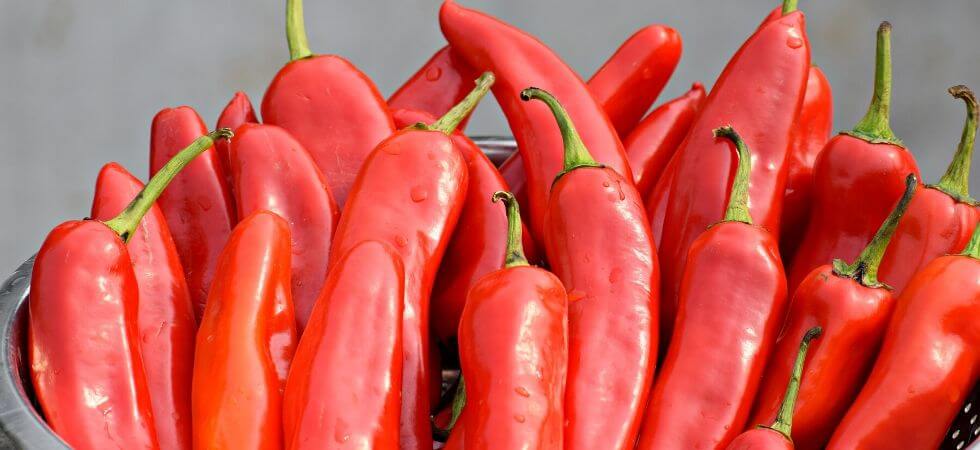
It’s a good idea to harden your chili seedlings before transplanting inside your greenhouse. This can be done by shifting your chili peppers plants into your greenhouse and keeping your seedlings in the same pots for 1 week.
After the frost has passed and the chilies have grown to a considerable height, you can then transplant them into 5-gallon containers inside your greenhouse or you can transplant them in your greenhouse raised beds. (I prefer growing in raised beds).
Before shifting them in the greenhouse bed make sure the soil is fertile, moist, with ideal soil pH (6-6.8), and is well-drained so that chilies thrive best in it.
The spacing should be done in such a way that each chilli plant is spaced 50 cm that is 20 inches apart.
You need to irrigate your chili pepper plants on a regular basis throughout the developmental phase, then feed the plants with a high potash tomato fertilizer (All-Natural-Muriate-Easy-Peasy-Potassium) once a week as soon as you see the first fruits have emerged.
Irrigating them and feeding them with fertilizers will give you the best results. Let us see what are the ways to increase our crop yields inside the greenhouse.
Things to be done are as follows:

Remember to harvest chillies before the start of cold season. People living in areas where summer is shorter then winter they need to provide their chilli plants with high temperatures and artificial sunlight source to have best results.
Do not be in hast to harvest early give them enough warm temperature and long hours of sunlight to have fully mature and intense flavor chili peppers.
By June-July ( For Most Regions) chili peppers are ready to be picked. The interesting fact about chili plants is that when you pick chili peppers from the plant, it will set more fruits. The more you pick, the more chilies your plant will produce.
You can do this experiment on your chili plant. At the end of the growing season, leave chilies on the plant a little longer, by doing so you will allow them to mature until they achieve a deep red color and intense flavor. This practice will let the plant to produce less fruit.
In case you have planted them outdoors and they have still not fully matured than its better to bring them indoors or harvest before the frost damages them.
You will need a pair of pruning clippers (secateurs) to cut the chillies.
Spare some time and subscribe to our newsletter, we will keep you undated with out upcoming articles.
After harvesting, freezing your greenhouse grown chillies will protect its taste.
Let us see how can we freeze our chillies to enjoy the same taste over the winter season.
Drying:
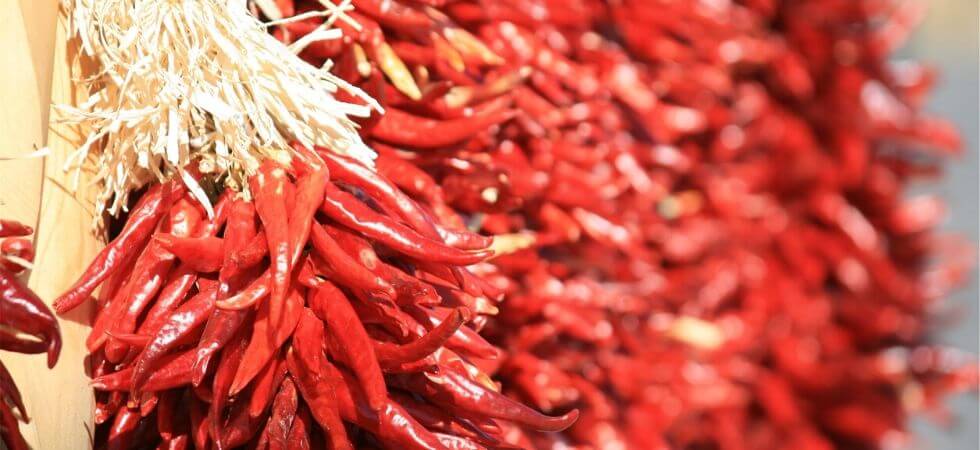
Freezing:
We have created this cool pin for you, save it to your “Greenhouse Gardening” Pinterest board.
